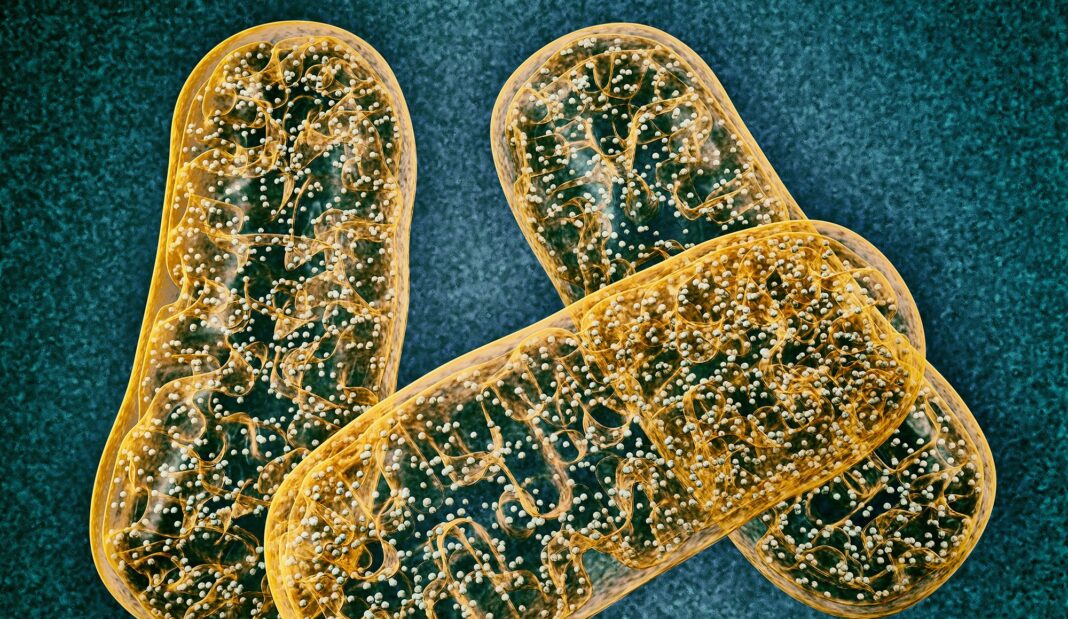function Points to Potential Therapeutic Targets against Inflammation

Mitochondria are structures within cells that convert the energy from food into a form that cells can use. Although most DNA is packaged in chromosomes within the nucleus, mitochondria also have a small amount of their own DNA. Mitochondrial DNA (mtDNA) contains 37 genes, all of which are essential for normal mitochondrial function. When mtDNA remains where it belongs (inside of mitochondria), it sustains both mitochondrial and cellular health. However, when it goes where it doesn’t belong, it can initiate an immune response that promotes inflammation.
Now, Salk scientists and collaborators at the University of California, San Diego (UCSD), have discovered a novel mechanism used to remove improperly functioning mtDNA from inside to outside the mitochondria. When this happens, the mtDNA gets flagged as foreign DNA and activates a cellular pathway used to promote inflammation to rid the cell of pathogens.
Their findings are published in Nature Cell Biology in an article titled, “Mitochondrial DNA replication stress enacts an endosomal pathway of nucleoid disposal prone to innate immune system activation.”
In their study, the researchers noted “the relationship among aberrant mitochondria and nucleoid dynamics, mtDNA release and cGAS–STING activation remains unclear. Here we show that, under a variety of mtDNA replication stress conditions and during herpes simplex virus-1 infection, enlarged nucleoids that remain bound to TFAM exit mitochondria.”
“We knew that mtDNA was escaping mitochondria, but how was still unclear,” explained Gerald Shadel, PhD, senior and co-corresponding author of the study, professor, director of the San Diego-Nathan Shock Center of Excellence in the Basic Biology of Aging, and holder of the Audrey Geisel Chair in Biomedical Science at Salk. “Using imaging and cell biology approaches, we’re able to trace the steps of the pathway for moving mtDNA out of the mitochondria, which we can now try to target with therapeutic interventions to hopefully prevent the resulting inflammation.”
Scientists have been working to uncover how mtDNA leaves mitochondria and triggers the innate immune response, but the previously characterized pathways did not apply to the unique mtDNA stress conditions the Salk team was investigating.
“We had a huge breakthrough when we saw that mtDNA was inside of a mysterious membrane structure once it left mitochondria—after assembling all of the puzzle pieces, we realized that structure was an endosome,” said first author Laura Newman, PhD, former postdoctoral researcher in Shadel’s lab and current assistant professor at the University of Virginia. “That discovery eventually led us to the realization that the mtDNA was being disposed of and, in the process, some of it was leaking out.”
The team discovered a process beginning with a malfunction in mtDNA replication that caused mtDNA-containing protein masses called nucleoids to pile up inside of mitochondria. The cell then begins to remove the replication-halting nucleoids by transporting them to endosomes. The endosome gets overloaded with these nucleoids, springs a leak, and mtDNA is suddenly loose in the cell. The cell flags that mtDNA as foreign DNA and initiates the DNA-sensing cGAS-STING pathway to cause inflammation.
“Using our cutting-edge imaging tools for probing mitochondria dynamics and mtDNA release, we have discovered an entirely novel release mechanism for mtDNA,” added co-corresponding author Uri Manor, PhD, former director of the Waitt Advanced Biophotonics Core at Salk and current assistant professor at UCSD. “There are so many follow-up questions we cannot wait to ask, like how other interactions between organelles control innate immune pathways, how different cell types release mtDNA, and how we can target this new pathway to reduce inflammation during disease and aging.”
The researchers hope to further map out the mtDNA-disposal and immune-activation pathway, including what biological circumstances are required to initiate the pathway and what downstream effects there may be on human health. The findings offer new targets for therapeutics to disrupt the inflammatory pathway and mitigate inflammation during aging and diseases, like lupus or rheumatoid arthritis.



 ABC News
ABC News